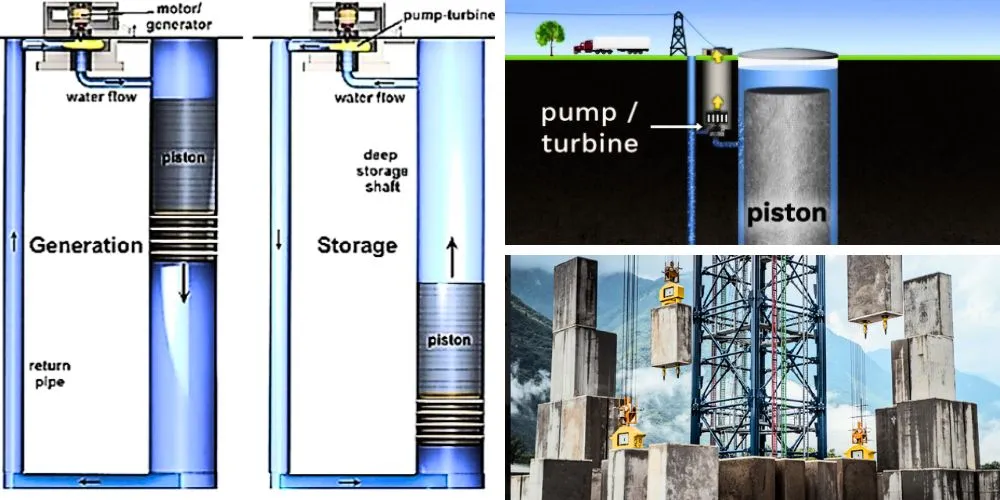Key Points:
- Gravity batteries utilize the force of gravity to store and release energy, providing a reliable power source.
- They are scalable, flexible, and have a longer lifespan than traditional battery technologies.
- Gravity batteries contribute to reducing carbon emissions and transitioning to cleaner energy sources.
- Continued research and development are expected to drive further advancements in gravity battery technology.
Gravity batteries, a groundbreaking innovation in renewable energy storage, are gaining traction as a viable solution to address the intermittency challenges of renewable power sources such as solar and wind. These batteries utilize the force of gravity to store and release energy, offering a potentially game-changing advancement in sustainable energy technology.
Gravity batteries operate on a simple yet ingenious principle: during periods of excess energy generation, such as sunny or windy days, surplus electricity is used to elevate heavy objects, typically large masses like concrete blocks, to a higher altitude. This process stores potential energy in the elevated objects, akin to charging a traditional battery.
When energy demand exceeds supply, such as during periods of low sunlight or wind, the elevated masses are gradually lowered in altitude, converting the stored potential energy back into electrical energy through generators, thus providing a reliable power source.
One of the key advantages of gravity batteries lies in their scalability and flexibility. Unlike conventional batteries, which often have limited capacity and degrade over time, gravity batteries can be scaled up by adding more mass or increasing the height of the elevation, allowing for greater energy storage capacity without sacrificing efficiency.
Additionally, gravity batteries have a longer lifespan and lower maintenance requirements than traditional battery technologies, making them a cost-effective and sustainable solution for long-term energy storage needs.
Several companies and research institutions worldwide are developing and testing gravity battery prototypes with promising results. In Switzerland, for example, an “Energy Vault” project has demonstrated the feasibility of using cranes and concrete blocks to store and release energy on demand. Similarly, researchers in the United States and Australia are exploring alternative designs using train cars or water reservoirs to achieve the same goal.
The potential applications of gravity batteries are diverse and far-reaching. In addition to providing grid stability and balancing renewable energy sources, gravity batteries can be deployed in off-grid settings, remote areas, and disaster relief efforts, where access to reliable electricity is limited.
Furthermore, their environmentally friendly design and minimal environmental impact make them an attractive option for communities seeking to reduce their carbon footprint and transition to cleaner energy sources.
As research and development in gravity batteries continue to advance, experts anticipate these innovative energy storage systems will be crucial in accelerating the transition to a sustainable and resilient energy future.











